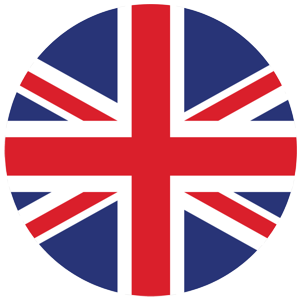- The examination is conducted remotely on a platform designated by the University and consists of a written and an oral part.
- Duration of the examination:
a) Written part: 80 minutes.
b) Oral part: up to 15 minutes.
- The examination covers content specified for level B2 according to the 2020 CEFR – Common European Framework of Reference for Languages, in the following selected skills:
a) Reading Comprehension;
b) Use of English;
c) Listening Comprehension;
d) Writing
e) Speaking.
Written part
- The written part will be available to candidates from 8:00 a.m. Polish time on the date specified in the recruitment schedule published on the website, for 12 hours, i.e., until 8:00 p.m. Polish time.
- The online test includes a declaration of independent work, together with a statement on criminal liability for making false declarations, and the main part of the test consisting of:
a) three multiple-choice tasks assessing reading comprehension (20 points);
b) two multiple-choice tasks (totalling 60 sentences) assessing knowledge of language means (60 points);
c) three multiple-choice tasks assessing listening comprehension (20 points).
d) three written tasks evaluating command of the written language (20 points)
Oral part
The oral part of the examination is conducted remotely on the platform designated by the University, on the specified date, and takes the form of a conversation with an examiner. Candidates qualified for the oral part will receive, via email, a link to a virtual room on the platform designated by the University, along with information regarding the date and time of the oral examination.
The oral part consists of three tasks (total of 25 points):
a) Introductory conversation – a brief self-presentation and responses to questions concerning everyday topics, interests, and experiences. (2–3 minutes)
b) Situational task – the candidate responds orally to described communicative scenarios, demonstrating the ability to use language naturally and appropriately in practical contexts. (3–4 minutes)
c) Picture-based task – the candidate describes and compares two illustrations, referring to visible elements as well as similarities and differences. The candidate is also expected to answer one or two questions related to the topic depicted in the images (e.g., preferences, opinions, experiences). (3–4 minutes)
Assessment criteria for the oral part: for each criterion, the candidate is awarded between 0 and 5 points.
- Formal accuracy – morphology, syntax
- Oral accuracy – pronunciation and prosody, fluency
- Vocabulary – range and activation
- Style – pragmatic / sociolinguistic aspects
- Communicative effectiveness – appropriate task completion.
The result of the written examination is visible to the candidate on the examination platform after the completion of the test.
Vocabulary related to the following thematic areas:
- The Human Being: character traits, appearance, feelings and emotions, skills and interests.
- Place of Residence: house and surroundings, home furnishings, household chores, buying and selling property.
- Education: school, university, campus, school subjects, student and school life, education systems.
- Work: professions and related skills, duties, workplaces, associated activities, career choices, job search, working and employment conditions, professional career development.
- Private Life: family, friends, daily activities, entertainment, ways of spending free time, holidays and celebrations, lifestyle, conflicts and personal problems.
- Food and Cuisine: food products, meals and their preparation, eating habits and dieting, flavours, places to eat, eating disorders.
- Shopping and Services: types of shops, products and their features, buying and selling, methods of payment, advertising, services, complaints, finance and banking, insurance, consumer rights.
- Transport and Travel: means of transport, accommodation, trips and sightseeing, breakdowns and accidents while travelling, road traffic, travel safety.
- Culture: cultural forms, artists and their work, participation in cultural events, traditions and customs, mass media, copyright protection.
- Sport: types of sport, clothing and equipment, sports facilities, sporting events, physical activity, positive and negative effects of sports, problems in modern sport.
- Health: lifestyle, physical and mental health, illnesses and symptoms, treatment, lifestyle diseases, disabilities, addictions, first aid.
- Science and Technology: scientists and scientific fields, discoveries and inventions, use of technology, information and communication technologies (ICT), opportunities and risks related to technology.
- Nature and the Environment: weather and climate, plants and animals, geographical features, environmental threats and protection, natural and environmental disasters, the universe.
- State and Society: social events and issues, government institutions and structure, international and social organisations, politics, economy, human rights, religions, ideologies.
Language forms:
Tenses, ways of expressing the future, modal and semi-modal verbs, conditional sentences, unreal past, passive voice, reported speech, indirect questions, articles, phrasal verbs, countable and uncountable nouns, quantifiers, verb patterns, prepositions, adjectives and adverbs, relative, reflexive and indefinite pronouns, possessive adjectives and pronouns, word formation.
 Civil Engineering and Architecture
Civil Engineering and Architecture Electrical Engineering, Automatic Control and Computer Science
Electrical Engineering, Automatic Control and Computer Science Environmental Engineering, Geomatics and Renewable Energy
Environmental Engineering, Geomatics and Renewable Energy Mechatronics and Mechanical Engineering
Mechatronics and Mechanical Engineering Management and Computer Modelling
Management and Computer Modelling Civil Engineering
Civil Engineering Computer Science
Computer Science Environmental Engineering
Environmental Engineering Business Management
Business Management Mechanical Engineering
Mechanical Engineering